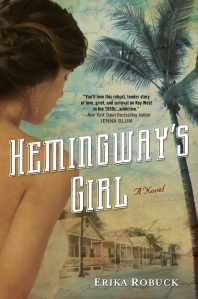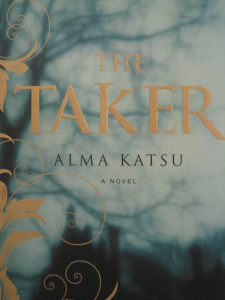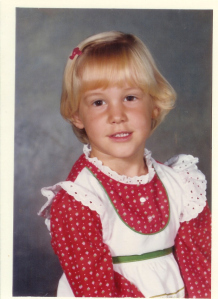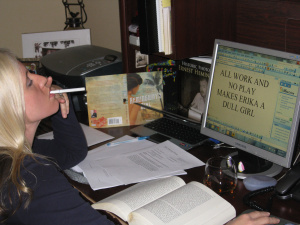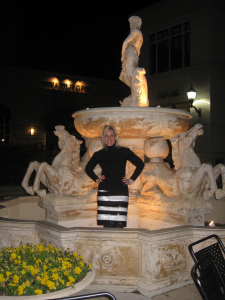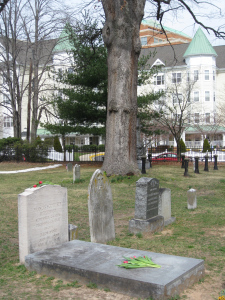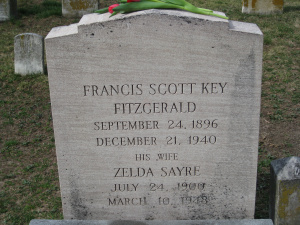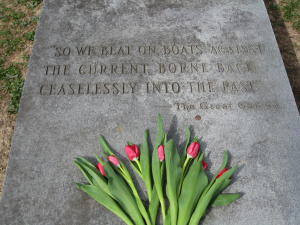Erika Robuck's Blog, page 23
April 10, 2012
Hemingway’s Girl Teaser: 7 Lines
I’ve been tagged by author, Kimberly Brock, whose novel THE RIVER WITCH comes out on April 6th. She said I had to do this:
1. Go to the 77th page of your WIP or latest book.
2. Count down 7 lines.
3. Copy the 7 sentences that follow, and post them.
4. Tag 7 other authors.
In this scene, my protagonist, Mariella (Hemingway’s maid) sits at an outdoor cafe with him, while he works in his notebook. Without further ado, here are seven lines from the 77th page of Hemingway’s Girl. (Though strangely, with WordPress formatting, it doesn’t look like seven lines.)
“You know, I’m going to write a story about you, Mariella.”
“Please don’t,” she said.
“Why?”
“I won’t be used.”
“Used?”
“When you put people on your pages, you take something away from them.”
He looked at her closely, and then at his notebook. “I don’t want to share you with anyone, anyway.” He drew a long, diagonal line over everything he’d written, and turned to a clean page.
Now, I’ll tag these 7 brilliant authors to give us a tease:
I can’t wait to read their posts!








Hemingway's Girl Teaser: 7 Lines
I've been tagged by author, Kimberly Brock, whose novel THE RIVER WITCH comes out on April 6th. She said I had to do this:
1. Go to the 77th page of your WIP or latest book.
2. Count down 7 lines.
3. Copy the 7 sentences that follow, and post them.
4. Tag 7 other authors.
In this scene, my protagonist, Mariella (Hemingway's maid) sits at an outdoor cafe with him, while he works in his notebook. Without further ado, here are seven lines from the 77th page of Hemingway's Girl. (Though strangely, with WordPress formatting, it doesn't look like seven lines.)
"You know, I'm going to write a story about you, Mariella."
"Please don't," she said.
"Why?"
"I won't be used."
"Used?"
"When you put people on your pages, you take something away from them."
He looked at her closely, and then at his notebook. "I don't want to share you with anyone, anyway." He drew a long, diagonal line over everything he'd written, and turned to a clean page.
Now, I'll tag these 7 brilliant authors to give us a tease:
I can't wait to read their posts!








April 8, 2012
Review: The Taker and The Devil’s Scribe
“Luke goes through the motions of examining the prisoner, but he can barely think for the strange pulsing in his head. He shines a penlight into her eyes–they are the palest blue eyes he’s ever seen, like two shards of compressed ice–to see if her pupils are dilated. Her skin is clammy to the touch, her pulse low and her breathing ragged.” (Alma Katsu, THE TAKER)
THE TAKER, by Alma Katsu, was published in 2011 and is 436 pages. I bought the book at a signing for the author at One More Page Books in Arlington, VA at the very high recommendation of the staff. I loved it, just as they thought I would.
THE TAKER is a multi-period novel. It begins in present day Maine where emergency room physician, Dr. Luke Findley, is nodding his way through another night in his sleepy town, until the police bring in a young woman, Lanny McIlvrae, for evaluation. Lanny was found wandering on the side of the road in shock in the bitter cold, and confessed to murdering a man, whose body is now stored in the hospital morgue.
As Luke examines his patient, he finds himself immediately drawn to the sweet, slight young woman, and curious about what would lead her to commit such an act. As she beings telling him her impossible history, beginning in the same town in the nineteenth century, Luke feels everything he knows to be true slipping away.
Lanny tells him of her family, the boy she loved more than herself, and how a scandal led her to Boston and an abduction by immortal creatures who had long stopped caring for their souls. Led by the charming yet diabolically evil Count Adair cel Rau, Lanny becomes a slave, doomed for all eternity at the hands of the Count. Her own loving heart leads the man she loves into danger, and she must risk everything for a chance at redemption.
THE TAKER is the kind of book that is impossible to put down. From the first chapter, I was as spellbound by Lanny’s tales of treachery and pain as Luke, and I raced through each chapter, present and past, to find out more. Katsu is a master storyteller with perfect pacing and a knack for creating fascinating characters.
I was warned by the author that there were very difficult scenes to read, and I’m glad I was alerted to that fact. Sections of the novel were so dark and frightening they took my breath away, but I’m glad I kept reading. The climax and conclusion were satisfying, but left me wanting more, which is what all great fiction should do.
I’m pleased to say that I was able to indulge a bit more in the world of the THE TAKER because Katsu just published a novella feature Lanny in the 1800s in Baltimore called THE DEVIL’S SCRIBE, where she meets Edgar Allan Poe and inspires one of his most memorable stories.
If you are a fan of Anne Rice’s vampire novels or True Blood, you will love the spellbinding, troubling, mesmerizing, and fascinating stories of THE TAKER and THE DEVIL’S SCRIBE. I can’t wait to read the next book in the series, THE RECKONING, due out in June.
For more on Alma Katsu, visit her website at http://almakatsu.com/books.php .








Review: The Taker and The Devil's Scribe
"Luke goes through the motions of examining the prisoner, but he can barely think for the strange pulsing in his head. He shines a penlight into her eyes–they are the palest blue eyes he's ever seen, like two shards of compressed ice–to see if her pupils are dilated. Her skin is clammy to the touch, her pulse low and her breathing ragged." (Alma Katsu, THE TAKER)
THE TAKER, by Alma Katsu, was published in 2011 and is 436 pages. I bought the book at a signing for the author at One More Page Books in Arlington, VA at the very high recommendation of the staff. I loved it, just as they thought I would.
THE TAKER is a multi-period novel. It begins in present day Maine where emergency room physician, Dr. Luke Findley, is nodding his way through another night in his sleepy town, until the police bring in a young woman, Lanny McIlvrae, for evaluation. Lanny was found wandering on the side of the road in shock in the bitter cold, and confessed to murdering a man, whose body is now stored in the hospital morgue.
As Luke examines his patient, he finds himself immediately drawn to the sweet, slight young woman, and curious about what would lead her to commit such an act. As she beings telling him her impossible history, beginning in the same town in the nineteenth century, Luke feels everything he knows to be true slipping away.
Lanny tells him of her family, the boy she loved more than herself, and how a scandal led her to Boston and an abduction by immortal creatures who had long stopped caring for their souls. Led by the charming yet diabolically evil Count Adair cel Rau, Lanny becomes a slave, doomed for all eternity at the hands of the Count. Her own loving heart leads the man she loves into danger, and she must risk everything for a chance at redemption.
THE TAKER is the kind of book that is impossible to put down. From the first chapter, I was as spellbound by Lanny's tales of treachery and pain as Luke, and I raced through each chapter, present and past, to find out more. Katsu is a master storyteller with perfect pacing and a knack for creating fascinating characters.
I was warned by the author that there were very difficult scenes to read, and I'm glad I was alerted to that fact. Sections of the novel were so dark and frightening they took my breath away, but I'm glad I kept reading. The climax and conclusion were satisfying, but left me wanting more, which is what all great fiction should do.
I'm pleased to say that I was able to indulge a bit more in the world of the THE TAKER because Katsu just published a novella feature Lanny in the 1800s in Baltimore called THE DEVIL'S SCRIBE, where she meets Edgar Allan Poe and inspires one of his most memorable stories.
If you are a fan of Anne Rice's vampire novels or True Blood, you will love the spellbinding, troubling, mesmerizing, and fascinating stories of THE TAKER and THE DEVIL'S SCRIBE. I can't wait to read the next book in the series, THE RECKONING, due out in June.
For more on Alma Katsu, visit her website at http://almakatsu.com/books.php .








March 29, 2012
Author Photo Outtakes
Earlier this week at the fabulous Debutante Ball Blog, Erika Marks ruminated on the dreaded author photo–that terrifying and stressful bit of awkwardness that has to go on the published book. In a very unscientific poll, I found out that nine out of ten authors would rather write a synopsis than take an author photo. But there are so many bad author photos out there, how bad can yours actually be? If you simply select one of the categories of author photo cliches, at least you'll know you're not alone. For your amusement (and because Erika Marks double-dog-dared me) I've dedicated this post to author photo cliches and outtakes. I hope you enjoy it.
When I self-published my first novel, I scoured book jackets and author websites to see how writers posed. I found that the overwhelming majority of them stood by trees with their arms crossed, so that's what I did.
What you don't see in this picture are my three boys running around the yard like savages while I swat them away between takes. This picture worked well enough for my indie endeavor, but for my new novel (HEMINGWAY'S GIRL) with a traditional publisher, I wanted a new picture. The only thing I was sure about was that I didn't want my face on my hand, because if an author isn't standing next to a tree with her arms crossed, it's likely that she'll have her face on her hand.
I considered reaching back a bit in time to when my hair didn't need chemical assistance to lighten it, and my skin glowed without make up. I worried, however, that people would be disappointed if they showed up for a signing and I didn't look like this anymore.
Then I considered the on location, research with Hemingway shot, but truth be told, Hemingway looked a little creepy in this picture.
Then I thought about going for something a little more edgy. After all, writers from the past often posed with cigarettes. For obvious reasons, however, I vetoed these.
I even wondered if I should go for the truly authentic author photo–the one that captures the day-to-day life of the writer in the reading chair, with the dog, in PJs.
But, no. Just no.
Ultimately, I went to my hometown of Annapolis, Maryland with my friend and photographer Catherine Pelura. We walked the streets, chatted, and snapped photos as we went. Some of my favorite shots were the intense, thinking, gazing off into the distance photos.
I also liked the super-approachable, relaxed garden shot.
I sent several pictures to my publisher and told them to choose. And after all of that, guess which one they picked–the hand on the face shot.
I'm already thinking ahead to my next novel's author photo. Scott and Zelda Fitzgerald are characters, and Zelda was known for jumping in fountains, so maybe I'll use something like this:
Or we'll walk the streets of Baltimore, where the book is mostly set, and snap pictures at the old Fitzgerald haunts around town. I've already prepared myself that of the fifty photos Catherine will take, I'll end up picking the one of my hand holding up my head.
Now that I've humiliated myself with some of these pictures, I dare YOU (writer, yes you) to blog on some of your author photo ideas and outtakes.








March 23, 2012
Review: The Sister Queens
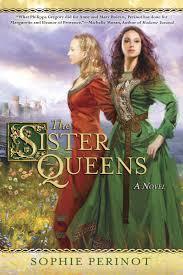
THE SISTER QUEENS by Sophie Perinot was published earlier this month and is 528 pages. I "met" Sophie through our shared passion for history and social media, and was delighted to find out we have the same publisher. We are also in a writer support group called Book Pregnant, and share our launch stories with other authors releasing this year.
THE SISTER QUEENS is the epic story of French sisters Marguerite and Eleanor who marry kings of France and England, respectively, and the way that their lives, loves, and losses unfold over the years. When the novel begins, the girls are young, betrothed, and extremely competitive. After their marriages, they become separated by miles and cultures, but their relationship stays alive in their active correspondence. THE SISTER QUEENS spans over two decades, and chronicles the evolution of each sister's marriage and country, their children, and how their rivalry bloomed into the most beautiful of friendships.
Perinot's attention to historical detail and research are evident, though the facts never weigh down the fiction. From battle scenes to bedroom scenes, her detailed writing adds to the scenery of the past and provides a fascinating backdrop for her vivid characters.
Marguerite and Eleanor are strong, authentic women, and at different places in the novel I found my own allegiance shifting from sister to sister, and country to country. Both characters have fully developed arcs, and the ending moved me to tears.
If you enjoy historical novels in the style of Philippa Gregory or Diana Gabaldon, you will love THE SISTER QUEENS. The novel does have very graphic love scenes. I realize this will send some readers scurrying to the book store to buy it, and others running in the opposite direction, but whatever one's preference, it is clear that Perinot will be a force in historical fiction for years to come.








March 15, 2012
The Beauty of Old Death
"I wouldn't mind a bit if in a few years Zelda and I could snuggle up together under a stone in some graveyard. That is really a happy thought, and not melancholy at all." F. Scott Fitzgerald
Today I visited the grave of Scott and Zelda Fitzgerald in Rockville, Maryland. It's a trip I've been longing to make for some time, as the Fitzgeralds are characters in my new novel, REMEMBERING ZELDA, and I've been caught up in their world through my reading and writing for the past year.
I sent my manuscript to my editor early this week, but I've felt immobilized and somewhat depressed ever since. I've had the Fitzgeralds, particularly Zelda, in my head for so long that I'm having a hard time letting them go. I hoped a visit to the grave would give me the closure I needed to move forward and begin researching my next novel.
I received more than I could have ever hoped.
To start, this week marks the anniversary of Zelda's death and burial in March of 1948, so there is special significance in visiting the grave at this time. Also, the weather in Maryland has been unseasonably warm and springlike. Daffodils, Bradford Pears, and cherry blossoms have burst into life, and the birds are making happy, noisy work of nesting. Overall, it's a very hospitable environment.
But all of this isn't what gave me the most remarkable feeling today.
It was this:
This is a photograph of the radio in my car. I often listen to classical music because it soothes me when I drive, and it puts me in a literary mood. As I said before, I had the lingering effects of post-writing depression, and I was having an internal debate with myself about my novel. One of the main themes in the book is to do with the way Scott mercilessly used Zelda in his fiction–her words, letters, actions–he used it all. I had a nagging feeling of guilt that maybe I did the same thing by placing her in my novel.
Just as the thought entered my mind that my work was an attempt at redeeming her, and therefore, I was not using her as her husband had, the song The Dance of the Hours came on the radio.
The Dance of the Hours was the song playing the night Scott walked into the steamy, Alabama country club and saw young Zelda Sayre for the first time. She was dancing to the song, and the crowd had cleared the floor for her. I recollect this moment in a scene in my novel, and the song and the opera in which it is nestled, La Gioconda, recur as themes in my book. I have never heard that song on the radio before, ever. It felt as if Zelda was giving me her blessing.
I don't believe in coincidence. To me, the significance of that moment and the release and peace following it will live in my heart for a very long time. I realize that might sound strange to some of you, but I hope that others will understand the profound beauty of the providence, nous, or even simple serendipity I experienced.
When I got to the graveyard, that peace sunk deep inside of me. I stayed for awhile, leaving flowers and a penny. I walked around the old gravestones and snapped pictures of the large religious statues. I had a hard time leaving, but when I finally did, I left with the closure I was seeking.
I'm excited now for the future, and ready to transition back into research mode. I think I know who I will write about next, and I can't wait to share my subject with you. For now, I'll leave you with this.
"[I]n a hundred years, I think I shall like having young people speculate whether my eyes were brown or blue–of course they are neither..Old death is beautiful–so very beautiful–we will die together–I know." Zelda Fitzgerald, to Scott.
March 14, 2012
Review: Season of Open Water
"It is the fog that warps time. It is the fog that allows his life to extend behind him, ahead of him, the narrow of the road pulled under the wagon, with the known steady rhythm of Magdalyn's hooves as they beat against the oiled dirt. In the fog, the world loses its borders, its abrasiveness, its contour."
Dawn Tripp, Season of Open Water
Dawn Tripp's Season of Open Water was first published in 2005, and was just chosen as a "Dedham Reads Together 2012″ pick. I read and loved Tripp's recent novel, Game of Secrets, so I bought this book. I am pleased to say that it was every bit as powerful and beautifully crafted as Game of Secrets.
Set in 1927 on the New England coast, Season of Open Water is the story of one family's involvement in rum-running during Prohibition. It begins at the funeral of a local boy who got in over his head with the wrong sort. All too soon, however, the lure of money blows the impact of his death away on the ocean winds, and the decision of a grandfather to outfit a boat for smuggling alcohol opens a path into crime for his grandchildren, Luce and Bridge Weld.
Teenagers Luce and Bridge are inseparably close. Raised by a single mother and a fisherman grandfather, they are allowed freedom for hunting, fishing, and adventures. Luce's hot head and recklessness lead him into dealings with rum-runners. He is soon in over his head, and his only hope is that his cool, capable, fearless sister, Bridge, can help him stay afloat.
Bridge's loyalty to Luce is tested when she begins to fall in love with a local doctor and WWI veteran, whose past prevents him from embracing the present. As they find each other, danger, violence, and jealousy are a constant threat.
Season of Open Water is an outstanding novel, and Tripp is a gifted writer. Her words rise off the page and allow the reader to get lost in the past. Her knack for historical detail and for revealing the psychology of her characters makes for rich, layered reading. Her novel is unique and timeless, and would make a perfect book club selection.
Heartbreaking, compelling, and fascinating, Season of Open Water stands out as prize-worthy historical fiction. If you enjoy intense novels of desire and betrayal, you will love Season of Open Water.








March 13, 2012
Review: The Book of Lost Fragrances
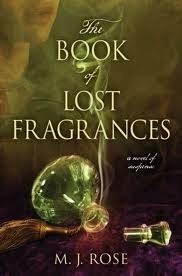
"[I]t wasn't the elaborate wall drawings in the passageway, the alabaster jars, the finely carved and decorated sculptures, or the treasure filled wooden chests that L'etoile would remember for the rest of his life. It was the warm, sweet air that rushed out to embrace him."
M. J. Rose, The Book of Lost Fragrances
The Book of Lost Fragrances by M. J. Rose is released for publication today, and is 384 pages. It is the fourth book in Rose's Reincarnationist Series, and is now my favorite of the novels.
From the moment Rose takes readers into an ancient Egyptian tomb with Napolean leading the way, to the present day in the catacombs under Paris, we become lost in a labyrinth of sight and scent that covers both time and place. The worlds of a perfumer in France, a skeptical television host in America, a Buddhist holy man in hiding, and countless others are linked by a fragrant ointment found in an Egyptian tomb, rumored to be a tool for experiencing past lives. Some will give their lives to protect it, other will kill for it, but along the way all who are involved learn the importance of the connections of people across time and space.
M. J. Rose is a master of the multi-period suspense novel. Her present and historical settings are unique and evocative, and her characters are vividly rendered. Always thrilling and sensuous, Rose appeals to a variety of readers from lovers of genre fiction to those of literary fiction.
The books in the series do not have to be read in order, so don't be intimidated by the three novels that come before this. If you are interested in bold, exciting, well-written suspense I highly recommend The Book of Lost Fragrances.








March 12, 2012
Review: Unspoken Abandonment
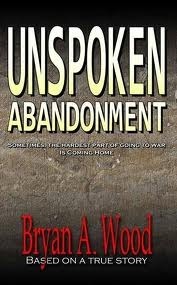
"I remember the darkness of Kabul made the stars shine brighter than I had ever seen, or have seen since. All I need to do is think about it for a moment, and I can feel the cool mountain air against my skin, bringing with it the feeling that even within the worst, there is always something worth finding."
Bryan Wood, Unspoken Abandonment
Unspoken Abandonment by Bryan Wood was published in February of this year. I came in contact with Bryan through the network of writers using social media. I was intrigued by his memoir about serving in Afghanistan and its after effects, and downloaded a sample for my Kindle. I was hooked instantly, bought the entire book, and read it in three nights.
Unspoken Abandonment is Wood's story of his time serving in combat operations in Eastern Afghanistan, and his difficulty readjusting to his life at home after the war. I have many friends in the service and have spoken to them about their time in combat, but I've never truly understood the psychological implications of war until reading this book.
With clear and straightforward writing taken in part from Wood's journals he kept while he served, he takes the reader into the dark night of active duty. From the moment his plane lands in Afghanistan, the heavy desperation and paralyzing fear of the war reaches off the page. Wood recounts that planes must land in total darkness with the lights out for the safety of the soldiers, and as the plane descended, I felt like I was right at his side.
Wood describes in raw detail the horrors that he witnesses. He describes the two states of the soldier's existence: mind numbing boredom and absolute terror. He tells of the atrocities he sees in the city in which his intervention is not allowed. He details the terrible poverty, mistreatment of women and children, and frightening combat experiences. So often, I wanted to look away from the page, but I forced myself to keep reading. These things need to be known.
When the combat journals end, the memoir is bleak and desolate. Wood begins to describe his return to the U.S. and the physical and emotional injuries he faces. His feelings of anger, guilt, and remorse threaten to engulf him, but like the night sky that brought Wood peace while in combat in Afghanistan, there is a glimmer of hope.
The rest of the memoir chronicles his difficult fight for peace, resolution, and redemption. Wood's honest and genuine expression of his emotions touches the reader, and the conclusion of the memoir left me with great respect and admiration for Bryan and for the millions of war veterans like him who have sacrificed so much.
Believe me when I tell you that reading about the hell and horrors of war are worth the journey in Unspoken Abandonment. Facing truth is important, especially when it is painful, and this memoir gives a voice to the thousands of men and women struggling upon reentry after serving in the war. I am convinced that Wood will reach many people through this memoir by not only helping to remove the stigma of PTSD, but by giving hope that there can be healing.
I give Unspoken Abandonment my highest recommendation.
You can connect with Bryan on his Facebook Author Page: https://www.facebook.com/BryanA.Wood









